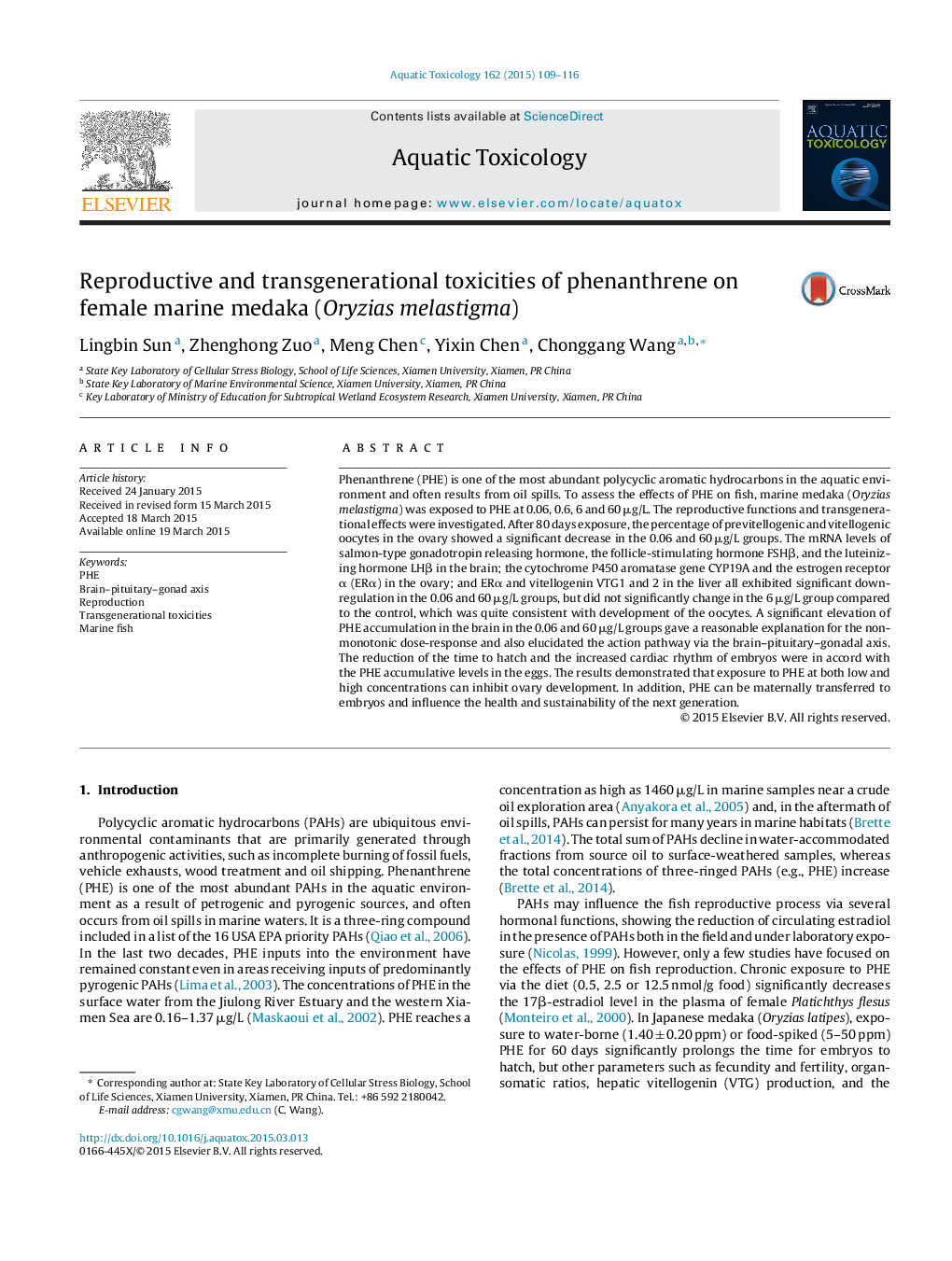| کد مقاله | کد نشریه | سال انتشار | مقاله انگلیسی | نسخه تمام متن |
|---|---|---|---|---|
| 4529110 | 1625943 | 2015 | 8 صفحه PDF | دانلود رایگان |

• Exposure to PHE inhibited the ovary development and fecundity in female medaka.
• The inhibition occurred in the 0.06 and 60 μg/L groups and not in the 6 μg/L group.
• PHE decreased the reproductive ability via the brain–pituitary–gonadal axis.
• DFZ decreased the mRNA levels of ERα and VTG1 and 2 in the liver.
• PHE can be maternally transferred to embryos and influence the cardiac rhythm.
Phenanthrene (PHE) is one of the most abundant polycyclic aromatic hydrocarbons in the aquatic environment and often results from oil spills. To assess the effects of PHE on fish, marine medaka (Oryzias melastigma) was exposed to PHE at 0.06, 0.6, 6 and 60 μg/L. The reproductive functions and transgenerational effects were investigated. After 80 days exposure, the percentage of previtellogenic and vitellogenic oocytes in the ovary showed a significant decrease in the 0.06 and 60 μg/L groups. The mRNA levels of salmon-type gonadotropin releasing hormone, the follicle-stimulating hormone FSHβ, and the luteinizing hormone LHβ in the brain; the cytochrome P450 aromatase gene CYP19A and the estrogen receptor α (ERα) in the ovary; and ERα and vitellogenin VTG1 and 2 in the liver all exhibited significant down-regulation in the 0.06 and 60 μg/L groups, but did not significantly change in the 6 μg/L group compared to the control, which was quite consistent with development of the oocytes. A significant elevation of PHE accumulation in the brain in the 0.06 and 60 μg/L groups gave a reasonable explanation for the nonmonotonic dose-response and also elucidated the action pathway via the brain–pituitary–gonadal axis. The reduction of the time to hatch and the increased cardiac rhythm of embryos were in accord with the PHE accumulative levels in the eggs. The results demonstrated that exposure to PHE at both low and high concentrations can inhibit ovary development. In addition, PHE can be maternally transferred to embryos and influence the health and sustainability of the next generation.
Journal: Aquatic Toxicology - Volume 162, May 2015, Pages 109–116